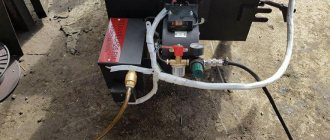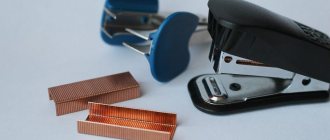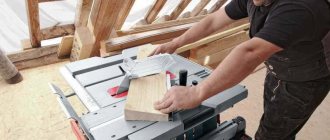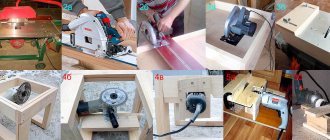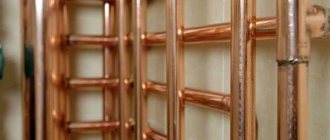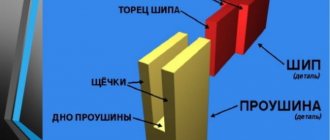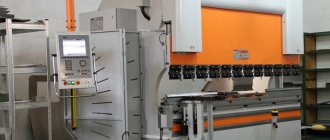Mounting dowel-nails are used for fastening various materials to hard surfaces (concrete, brick, silicate). There are two types of mounting dowel nails:
- For the mounting gun
- galvanized, with a washer. No pre-drilling required. - For manual driving
- a set of dowels and nails. A dowel is inserted into the drilled hole, after which the supplied nail is driven into it.
Traditionally, builders call dowel-nails for a mounting gun simply dowels (or mounting dowels), and for manual driving - dowel-nails.
General purpose expansion dowels
This is one of the widest groups of dowels that are used when installing furniture elements, suspended ceilings and other structures to the wall. As the name implies, fixation is carried out by expanding in the material, which means the wall must be quite dense.
Previously, instead of such dowels, wooden choppers were used. They were inserted into the drilled holes and self-tapping screws were screwed in, due to which the assembly was pulled apart and fixed. But it takes a long time to plan a chop from wood each time, so we developed expanding structures with standard dimensions for the diameter of the drills.
Description and principle of operation
For fixation, dowels of this type have moving parts that protrude outward as the screw is screwed in. The dowel itself is made of polyethylene, nylon or polypropylene. These are soft materials that are easily exposed to metal screws from the inside.
The length of the dowels can be extended, shortened or standard. There can be two, three or even four spacer blades. Some designs include a countersunk head to hide subsequent fasteners.
Expansion dowel device.
The “antennae” on the “body” of the element prevents the dowel from turning in the wall when the screw is tightened (due to a drill of the same diameter, the hole is slightly broken and without the “antennae” the plastic insert would easily rotate). The edge at the end prevents the dowel from being pushed deep into the wall.
Elements for fastening are available in standard diameters of 5, 6, 8, 10, 12,14,16 mm.
There are rare sizes of 4, 7 and 20 mm.
Difference in design
All expansion dowels have a split part, which diverges as the hardware is wrapped. The non-spacer base ensures that the integrity of the plastic structure is maintained. There may be a lip at the end to limit the insertion depth, but there are versions without it.
Expansion dowel in the wall.
All dowels in the group are also equipped with a guide cone, which ensures easier entry into the hole. According to the elements of tangential and anchor fixation, they differ into several types.
Expansion dowel with spikes
Installers call this model “chapai”. The design has serrated edges on both sides that release the fasteners in the hole. Two large spikes prevent turning until the teeth are engaged. This design is especially convenient when screwing hardware into the ceiling, when they can fall out under their own weight.
Expansion dowel with spikes.
Expansion reinforced dowel
It is most often called the “hedgehog dowel” because it has small protrusions on four sides that resemble spines. There are no long “antennae” in the design. Unlike the previous one, it expands along its entire length and is great for concrete. Due to fixation in all directions, the fastener can withstand increased loads well.
Expansion reinforced dowel.
Three-spread dowel
The model is designated as T-dowel. The spacer part contains, instead of teeth, solid, even ribs that reliably fix the fastener in the hole. The non-expandable base is equipped with conical projections that prevent the dowel from sinking into the wall. It is often used on brick and concrete to fix shelves, lamps, and paintings.
Three-spread dowel.
Application
In general, the expansion group of dowels perfectly resists shear loads, so the fasteners are optimal for walls. The weights hung on it press down, and the spacer part reliably holds the weight of up to 20-30 kg at each point. Dowels of this type are also suitable for floor installation, for example, to secure the linoleum threshold in a concrete floor. The impact from the legs is across the location of the screw axis and it does not become loose.
But when applying longitudinal force, for example, for attaching objects to the ceiling, they are not the best, since they are less resistant to pulling out. On ceilings and consoles, it is permissible to fix only light interior parts or technical devices (installation of wiring under a suspended decorative ceiling, fastening a lamp, etc.). The fixative holds well in concrete, stone, and brick.
Size
Dowels, like any other fastening elements, have different sizes, because they can be used on different materials and under different conditions. Let's look at the dimensions of the fastener element in question:
- The length of a 6x40 mm dowel-nail is 40 mm (this is the second number in the name of the part in question);
- The length of the nail itself, which is screwed into the dowel, is 45 mm;
- The diameter of the dowel is equal to 6 mm (the first number in the name) and the same parameter of the nail is 4 mm;
- The thickness at different ends of the part is different, the minimum is 10, the maximum is 50;
- Anchoring depth - 30.
Universal multi-sided dowels
Universal dowels are suitable for installation in different materials by density. The hardness of the base affects the method of attachment.
Description and principle of operation
The dowel design has a spacer part, but it does not just expand slightly, but is capable of folding in the area of the opposite end. Thanks to this, a counter stop is created that reliably holds the fastener and the piece of furniture hung on it.
The holding method depends on the density of the wall material. If the wall is solid, then the expanding part moves apart until it stops and is held in place by friction forces. With a hollow wall, the base goes right through, and due to the deformation of the second edge (bent at an angle of 90 degrees or tied in a knot), an anchor is formed.
Difference in design
There are two types of universal dowel configurations - folding and twisting. The first attracts the plastic strips as the metal pin is screwed in. This creates a persistent crossbar that prevents the fasteners from coming out or knocking out part of the wall.
Multi-sided wall plug.
Folding multi-sided dowel.
The second one has a plastic insert that is screwed into a knot when the threaded element rotates. This leads to the formation of a large seal on the reverse side, preventing the movement of the screw. The first type of dowel can be unscrewed back if desired, but the second type cannot.
Twistable dowel in the wall.
Twistable dowel.
Application
Universal dowels are applicable everywhere where expansion dowels are used. Moreover, they will be able to catch where spacers would simply jump out (for example, in hollow materials). Due to the formation of a large stop on the reverse side, universal dowels adhere better to the ceiling. But they are inferior in terms of load-bearing capacity, and it is undesirable to hang heavy hanging tables, cabinets and other objects on them.
Most often they are used for fixation:
- wooden blocks;
- metal slats;
- parts from suspended ceilings;
Design
The dowel's operation is based on the expansion principle. This fastener looks like a cylindrical rod. Its design includes two parts:
- non-expandable Prevents contact of the metal base of the hardware with the material of the attached product;
- spacer Expands during installation. Actually, due to this phenomenon, reliable fasteners are formed.
You can find out what a universal dowel looks like by studying the drawing.
Types of dowels for drywall and other thin-walled materials
Thin-walled materials include: gypsum fiber boards, particle boards, plasterboard sheets and others. A regular expansion dowel cannot be fully secured in them due to the low density of the base and shallow depth.
Such panels are often used for decorative wall cladding, insulation or installation of partitions. To hang a picture or shelf on such a base, you can use universal fasteners. But it is better to resort to a variety of dowels designed specifically for thin-walled materials.
The most common are “butterflies” with different design variations, available from many manufacturers. The transformable part can be made of either plastic or metal. The general principle of operation of the dowel is to form a massive stop on the reverse side, due to which the element is securely held in the wall.
For this:
- the thin wall base is passed through with a drill;
- insert the dowel;
- tighten the self-tapping screw.
As it deepens, the thread tightens the far end, expanding the edges of the supporting crossbar.
Other versions of drywall anchors have a one-piece design and are held in place by tall threads. Some can be unscrewed if necessary and installed in a new location, others can be mounted only once and forever.
According to the characteristics, dowels in this category are divided according to wall thickness, but most often they are produced in one size. Then the latch on the reverse side can move completely or partially.
Another parameter is the diameter of the dowel with a “shirt”. The choice of drill for making a hole depends on it. There are types of dowels that can be installed without pre-drilling, which increases productivity. Let's look at each type in more detail.
Dowel butterfly
The fastener was named because of its similarity in shape to butterfly wings. It consists of two parts - a metal screw and a plastic “shirt”. The latter is made of nylon and contains a non-expanding part with a side and a counter end with a thread. Between them there is a folding part, which is additionally reinforced with sliding partitions.
Butterfly dowel.
As the screw is screwed in, the ends are attracted to each other, and the longitudinal ribs become perpendicular, forming a large stop on the reverse side.
Butterfly dowel in a plasterboard wall.
In order for the plastic part to open, the length of the screw must be at least 55 mm. Only in this case will the plastic part open completely. The dowel can be unscrewed and re-tightened. Reliability of retention is not lost in this case.
Use it to attach to drywall:
- cornices;
- chandeliers;
- slats;
- shelves;
- antennas.
Dowel Driva
This is a type of dowel without a flared part. It consists of two elements installed in series. The first is a cone with a helical thread. It can be made of plastic or metal.
Wood dowel made of plastic.
Metal dowel.
The part is inserted into a pre-prepared hole by screwing it in with a special attachment. There are versions with a drill at the end, thanks to which installation occurs without pre-drilling.
Driva dowel with drill.
Due to the high thread turns with a wide pitch, reliable fixation is achieved in the hollow material. A slight protrusion of the element onto the opposite side of the panel is allowed.
Wood dowel in the wall.
The second part of the dowel is a steel self-tapping screw that is screwed into an already installed base. With its help, paintings, frames and other not very heavy objects are attached. The dowel is easy to dismantle if you need to remove the installed elements. When both parts of the dowel are metal, it can even be screwed into chipboards, which have a higher density compared to plasterboard.
Dowel Molly
The most reliable type of drywall dowels is “Molly”. It is made only of metal. This is galvanized steel, which has excellent corrosion resistance, so the fasteners do not deteriorate even in damp rooms. The dowel has a hollow collet with a supporting edge. It has teeth that protect the fasteners from turning. Such fasteners are classified by diameter and length, which is important to consider when choosing a specific thickness of plasterboard sheet.
Dowel Molly.
Installation is carried out using a drill, and then:
- A hollow collet is inserted into the prepared hole.
- Using a special gun, it is pushed apart using a lever method from the reverse side.
- The tool is removed and a screw is inserted into the hole with a metal edge. It just screws on the thread.
If necessary, the screw can be easily unscrewed and reinstalled. The load-bearing capacity is not lost.
Molly dowel in the wall.
One Molly dowel can withstand a load of up to 25 kg, so they are actively used for hanging kitchen furniture, chandeliers, lamps, cornices and shelves.
The screws in Molly dowels come with a countersunk head (so as not to interfere with the installation of other overlapping panels) or with a spherical head (when the mounting eyes are located on top of the furniture or inside the cabinet).
Type and purpose of tools
In order for a drill to be as efficient as possible, you need to select it correctly, taking into account the properties of the material being processed, the requirements for hole sizes and the characteristics of the equipment. Manufacturers produce drills of many types, but they are all divided according to their scope of application into three main types:
- Machine tools (machine);
- Locksmiths;
- Construction.
Drills also differ in design. It is customary to distinguish between conical drills and twist drills. The last type of tool is the most common - twist drills are most in demand for use with drilling machines and hand-held power tools. In construction, the most popular are drills with special tipped hard alloys, which allow working with stone, brick and concrete. We'll talk about them today.
Dowels for aerated concrete and other porous materials
Aerated concrete, unlike drywall, is voluminous and thick, but contains many voids within its structure. Multiple engagement points are required for secure fixation. Here are the main types of dowels suitable for such material.
Dowel with cutters
The sleeve is made of sheet iron. The working surface has four expanding edges, covered along the entire “body” with cutters. When screwing in the self-tapping screw, the steel teeth seem to “bite” into the aerated concrete and prevent the fastener from moving outward.
Dowel for aerated concrete with cutters.
For reliable installation, it is necessary to correctly select the diameter of the drill so that the dowel does not dangle in it. In this case, the four working edges with cutters will prevent rotation along the axis and will reliably open up. But the product cannot be dismantled, since the metal takes on an expanded shape and does not move back, which means the installation location must be carefully verified.
Dowel for aerated concrete with cutters in the wall.
Dowel with screw ribs
The model is marked GB. It is a plastic conical tube with a cut and solid ribs protruding along the entire structure. They are located with a slight overlap in the spiral, so they rotate slightly at the moment of driving. Due to the long, rounded ribs, the load is evenly distributed over the entire circumference and the dowel sits securely in the aerated concrete wall.
Dowel with screw ribs.
The plastic sleeve can accommodate screws with a diameter of up to 28 mm. Such elements have approval from the German building supervision organization and are suitable for preliminary or permanent installation in aerated concrete.
Dowel with screw ribs.
The length of the screw is calculated by adding the length of the dowel itself, the thickness of the mounting eye and another diameter of the screw. The element is even suitable for fixing into unplastered walls. When installing, it is important to use the drilling mode without impact, otherwise the hole will be too loose and weaken the fixation.
Metal dowel with internal thread
The dowel is made of metal and has high turns of external thread. Due to this structure, it is well retained in the porous material and resists not only shear loads, but also longitudinal effects.
Metal dowel with internal thread.
Installed in a pre-drilled hole using a hex wrench using the rotation method. For large volumes of mounting elements, it is advisable to use a screwdriver or drill at low speeds.
The dowel has proven to be resistant not only to static but also to variable loads, for example, holding shelves, shoe stands, and kitchen hanging cabinets. Since the part is entirely made of metal, it provides increased fire resistance and can be used near heating sources (it is allowed to hang heating radiators or fireplace protective screens on such dowels).
Based on the base materials, the dowel is suitable for:
- solid and hollow light expanded clay;
- solid porous concrete;
- ordinary expanded clay.
Installation of dowel-nails in brick and concrete foundations
In order to mount a dowel-nail into a brick, a hole of the appropriate depth and diameter is first drilled in it. To do this, proceed in the following sequence:
- begin to drill the brick using a drill set to impact approximately in its center, being careful and, if possible, at low speeds for the first 10-15 mm;
- free the resulting hole from dust and debris;
- Lightly tapping the cuff of the dowel with a hammer, drive it into the hole;
- The nail is carefully driven in with a hammer or screwed in with a screwdriver or screwdriver.
If the base is concrete, then they act a little differently:
- the hole is marked using a nail or a center punch and a hammer;
- using a percussion hammer, a hole in the concrete corresponding to the diameter is drilled, and the depth of the hole should be 5-10 mm greater than the length of the dowel;
- the hole is cleared of dust and construction debris;
- the dowel is carefully hammered into the hole;
- carefully drive the nail, and not completely, leaving a distance of 3-4 mm from its head to the cuff. This is necessary for suspension.
Frame dowels (facade)
This is the most heavily loaded type of fastener with plastic elements. The model should not be confused with frame anchors, where the “shirt” is also made of metal. The frame dowel uses a plastic sleeve of complex shape and a screw of increased thickness. This allows you to hang particularly heavy parts on the fasteners, eliminating gradual subsidence in the material.
Description and principle of operation
Frame dowels have “whiskers”, teeth and moving parts that stick out to the sides as the screw is turned. The steel element is equipped with a low-profile thread and is produced 10 mm longer than the plastic counterpart. The screw is tightened with a screwdriver, screwdriver, star wrench, and in the largest versions of the dowel, with a spanner.
The model is available in different lengths up to 100 mm, so it is well fixed in numerous places, even when installed in “weak” materials with pores or technical voids. The product is suitable for through installation. The increased dimensions of the fasteners contribute to an increase in the fixation area.
Difference
According to their configuration, frame dowels are conventionally divided by the number of spacer zones. There are one or several such rising plates. The plastic sleeve has comb tracks or single triangular ribs. An expansion zone is provided both next to the cone and closer to the base, which prevents the dowel from loosening in a fragile material with voids.
Application
Due to the design with an increased cross-section of plastic and metal, as well as a more elongated non-expanding part, the frame dowel is suitable for fixing heavy building materials. It is used during installation:
- wooden beams and slats;
- door frames;
- window frames;
- large-diameter communications (for example, sewer pipes);
- brackets and tires;
- façade laths.
The steel element sits securely in the plastic part and resists shearing or bending forces. Since the fasteners provide for through installation, the product always has a collar that protects it from falling into hollow materials. The head can be either hidden for inserting the screw flush or protruding.
Product classifications
When choosing a mount, 5 main factors are taken into account:
- load magnitude - on the dowel, on the surface, on the structure;
- nature of the load – stationary, dynamic;
- type of fixation;
- nature of the material - stone, concrete, brick, drywall;
- surface structure – wall, ceiling.
Actually, fasteners are available in several types for different methods and materials.
The video below describes the rules for choosing dowels:
By type of installation
A dowel, or rather, a nail, can have a slightly different structure, so you need to work with it with different tools.
- Manual installation - that is, using mechanical tools. Nails for such work are divided into 2 types: without thread - the nail is driven in with a hammer, there is no way to unscrew it;
- threaded nail - driven or screwed in. Its main advantage is the possibility of dismantling.
By surface material
More interesting from the user's point of view, since it allows you to determine which fasteners are suitable for which wall or ceiling.
- The most common are nylon dowels with or without threads with a diameter of 2 to 16 mm. They are used for fastening into standard building stone - brick, concrete, and can withstand from 200 to 450 kg of stationary load.
- Dowel for aerated concrete - the material is considered to be relatively low-porous, so such fastening is quite acceptable. The dowel is held in place by spiral ribs and wedging when driving a nail.
- Frame - have a large length, from 60 to 360 mm. They are produced in 2 types: for solid solid material and for hollow slotted material. The spacer part of the dowel is elongated and is designed so that when passing through the slotted base, the dowel will engage several jumpers, which will ensure fastening.
- Distance dowels allow you to fasten elements - sheathing, for example, at some distance from the wall. The distance can vary from 1 to 30 mm. The distance dowel is divided into 2 parts - one for the rail, the second for the material, and are connected with a screw of a special design. In this way, you can compensate for numerous wall irregularities and obtain a perfectly flat surface.
- Universal – capable of “independently” determining the presence or absence of voids. When fixed into a solid material, the spacer body expands and is tightly fixed, and when it gets into voids, it bulges and adheres to the support.
- Metal dowels behave in the same way , that is, with a metal body. They are designed for fastening to thin-walled surfaces, but at the same time hold a sufficient load. When the screw is screwed in, the metal dowel bulges and is pressed against the thin support.
- The nail dowel provides quick installation of sheathing, baseboards, slats and other things when it is necessary to strengthen a large number of elements. The nail here is knurled in the form of reverse cones. It is inserted together with the dowel into the drilled hole through the rail and driven in with a hammer. Cannot be dismantled.
- Products with spring-loaded folding strips - butterfly dowels - are used to fix objects to a hollow surface - to false ceilings, for example, when installing a chandelier. Having passed through the hard layer, the dowel opens under the action of a spring and rests against the sheathing from the inside. Typically, the model is sold with hooks or threaded rods.
- For fastening heavy weight structures - garage doors, sun awnings, etc. - into concrete and solid brick, metal dowels with threaded rods or bolts . The fasteners are designed for very heavy loads - up to several tons.
- Dowels for drywall and porous concrete - both metal and plastic, have a tip in the form of a feathery drill and a large thread on the spacer body. For such dowels, a hole is not drilled, but the entire structure is screwed in with a regular screwdriver.
- The insulation holder is a special dowel for fixing a heat insulator or hard foam material. Holes for it are drilled in brick and concrete, but the dowel itself is driven in without a nail.
- A very specific type is an injection dowel . A mesh anchor is inserted into the hole for the fastener, then a dowel is driven in and a quick-hardening compound is injected with a syringe through the protective sleeve. Under its pressure, the anchor mesh inside the material expands, forming an anchor in the form of a ball. When fixing into a slotted brick, it is allowed to use a dowel without a mesh.
The length, thickness, weight of dowel-nails are discussed below.
Disc-shaped dowels (fungi, umbrellas)
These are special-purpose dowels with an enlarged plate-shaped head. It increases the clamping area of the fixed material. The diameter of the fungus is possible from 45 to 90 mm. The cross-section of the nail itself is 8 and 10 mm. From the outside, the fasteners are usually covered with finishing materials, such as plaster, and therefore do not affect the design of the building.
Description and principle of operation
The dowel consists of a large plate that distributes the load from the received material more evenly. Since it is used to fix fragile insulation (foam plastic, mineral wool, etc.), the large area of the cap prevents it from breaking through. Installation of fasteners is carried out using a hammer drill, which makes a hole in the wall. Then insulation is applied and a dowel-fungus is inserted through it.
Disc-shaped dowel in the wall.
Fixation is achieved by driving a long nail that pushes the plastic sleeve apart. In this case, it is important not to drill the hole for the dowel very deeply, otherwise there will be a depression on the surface of the insulation. An umbrella on a leg perfectly holds soft material, preventing both displacement along the wall and detachment from it.
Difference
Umbrella dowels are available with or without expansion washers. This additional element fixes the insulation even more reliably.
Disc-shaped dowel with expansion washer.
In addition to wall dowels, they produce fungi for installing roofing materials. In this case, the nail is driven into the concrete (ceiling) and can hold corrugated sheets, ondulin, roofing felt and other sheet panels.
The large cap prevents water from flowing into the mounting hole. With this type of dowel, the plastic umbrella contains three large spikes that prevent movement. The conical part makes it easier to insert the plastic sleeve into a pre-prepared hole.
Dowels for insulation are divided into the following types:
1. With a plastic nail. There are no metal elements in this design. Plastic perfectly tolerates temperature changes from -40 to +80 degrees. The fastener can withstand impacts of 20-380 kg/m². Plastic retains heat transfer better, which is beneficial when installing insulation.
Due to their low cost, most buyers prefer these dowels, but they are not suitable for fixing thick insulation.
Dowel with plastic nail.
2. With a metal nail. A similar design, only the expansion nail is made of galvanized steel. The holder does not rust and can withstand loads of up to 750 kg/m². This is a more reliable way to connect soft insulation and the wall, but cold also passes through the metal. The cost of dowels with steel nails is higher.
Dowel with metal nail.
3. With thermal head. The metal nail head is complemented by a plastic tip. It serves as an insulator and slows down heat transfer. With such a thermal head, the dowels are the most expensive, but the best in quality.
Dowel with a nail with a thermal head.
Application
Umbrella dowels are optimal for fixing mineral wool slabs to walls with subsequent covering with decorative panels. They are used when attaching strips of sheet insulation. They have proven themselves to be good at holding foam boards with a thickness of 25-50 mm. Subsequent plastering completely aligns the attachment points with the general surface and hides them.
Steel dowels for mounting gun
Galvanized dowel-nails with washers are used for fastening various materials to hard surfaces (concrete, brick, silicate) using a mounting gun without pre-drilling.
Operating principle
Powder mounting gun Walte PT355 When the washer is in the barrel of the mounting gun, it centers the dowel and prevents it from moving relative to the central axis during a shot.
When the dowel enters the base material, the washer moves towards the head and presses the attached element to the surface, increasing the clamping area of the fastener. Although no dowel is used to install this dowel-nail, its name is probably explained by the fact that to hold such a dowel-nail in solid material, a dowel is not needed - it, as it were, replaces the dowel.
Although this type of dowel is intended for a mounting gun, it has also found application in the household. where it is successfully hammered in with an ordinary hammer.
Characteristics
Design of a steel dowel with a washer For the production of steel dowels, high-strength carbon steel grade st.
70 class VK, KK, VD according to GOST 14959 (subgroup “c”) and some other brands. Fasteners must be subjected to heat treatment in order to obtain the appropriate hardness characteristics, which must be within the range of 53 to 56 HRC for high-quality fasteners and at least 51.5 HRC for dowels of ordinary quality, measured on the Rockwell scale. Finished products are subjected to a layer of protective zinc coating about 5-6 micrometers thick, applied by cathodic reduction. Domestic enterprises produce dowels for sighting of ordinary and high quality in accordance with the requirements of technical specifications TU 14-4-1731-92. The fasteners correspond to climatic version 01 according to GOST 15150.
The rod can be smooth or with longitudinal corrugation. A washer made of steel strip in accordance with GOST 503 must have a shear force relative to the rod (in any version) towards the head of at least 0.3 kN.
Dimensions and weight
The main dimensions of a fully equipped fastener for adjusting structural elements to the base material are: the length of the fastener, the diameter of the rod, the diameter of the head, the thickness and diameter of the mounted washer.
| Table 1. Size and weight of galvanized with washers | |||||
| Steel grade: steel 70 class VK, KK, VD. | |||||
| Diameter/Length | Cap diameter D (mm) | Weight 1000 pcs (kg) | Pieces in 1 kg | 1 piece (gram) | Weight of 1000 washers, (h=1.5 mm), kg |
| 3.7x30 | 8 | 4,30 | 232 | 4,3 | 1,2 |
| 3.7x40 | 8 | 5,20 | 192 | 5,2 | 1,2 |
| 4.5x30 | 10 | 5,55 | 180 | 5,5 | 1,2 |
| 4.5x40 | 10 | 6,75 | 148 | 6,7 | 1,15 |
| 4.5x50 | 10 | 7,95 | 125 | 7,9 | 1,15 |
| 4.5x60 | 10 | 9,15 | 109 | 9,1 | 1,15 |
Types of dowels based on material of manufacture
Although there are dowels with metal sleeves, most often this type of fastener is made of plastic. It is more affordable and does not require complex equipment with high heating temperatures to melt and give the desired shape. There are three types of plastic available.
Polyethylene (PE)
It is a product obtained by the polymerization of colorless ethylene gas. During the crystallization process, a dense plastic mass is formed. The structural formula of polyethylene belongs to saturated hydrocarbons and contains (-CH2-CG2-)n.
The substance tolerates exposure to negative temperatures down to -40 degrees. The plastic is quite durable, has high viscosity and does not absorb water. The material does not dissolve under the influence of gasoline, oils, acids, alkalis and alcohols.
Disadvantages include susceptibility to aging, a tendency to crack at too low temperatures, and destruction from aromatic hydrocarbons, as well as chlorinated hydrocarbons.
Polyethylene dowel.
Polypropylene (PP)
It is a derivative of ethylene. The structural formula classifies it as a saturated hydrocarbon and looks like this: (-CH2-CH(CH3)-)n. The material serves well at elevated temperatures up to +80 degrees, but is not so good in cold weather. Susceptible to aging and cracking. Under normal conditions, it is not brittle and hard, and does not absorb water at all.
Polypropylene can withstand prolonged contact with acids, alkalis, alcohols and saline solutions, but it also deteriorates from chlorinated hydrocarbons. This substance also allows odors to pass through.
Polypropylene dowel.
Selection rule
This rule is simple and sounds like this: the diameter of the drill is equal to the diameter of the dowel. Relative to its length, it is 3–5 mm longer than the fastening element. This ratio will be optimal. All instruments are marked accordingly. If you want to measure manually - with a caliper, for example - remember that you need to measure the soldering from pobedit, the tool itself is narrower.
Read also: Mounting a TV to the wall with your own hands photo
Why do we take a drill longer than the fastener? It's simple - we leave space for dust and crumbs formed during drilling. You also need the screw or self-tapping screw to go beyond the dowel. Then the grip will be maximum and your skill will be at its highest level.
In the video you can see how to insert the fastener into the wall and remove the dust generated during the work.
How to properly attach a profile to the wall
Before attaching a metal profile to the wall, you should have a set of tools and materials:
Profile – guide profile is mainly galvanized. This gives reliability to the created structure. The calculation is made using an online calculator or on your own. Material must be taken in reserve.
Dowel and nails for fastening the profile - for a solid wall measuring 6/40. If the base is wood, then 25mm self-tapping screws are applicable.
Drill with 6mm drill bit. and a screwdriver. Before using electrical tools, it is necessary to calculate the load on the electrical wiring.
Scissors for cutting metal. When installing a guide profile, it is sometimes necessary to make an incision on a metal product or cut it off.
Installation of the guide profile
To install the guide profile, a prepared surface with ready-made markings is required. How to fix the profile to the wall? Installation is carried out in the following algorithm:
- First of all, the guide profile is applied to the marking (the line can pass both from the inside and from the outside - depending on the nuances that arise)
- Next on the profile you need to mark the places for future fasteners. Basically, you need to retreat up to 15 cm from the edge of the profile. Maximum, the second fastener is located at 25 cm. from the first and so on - every 25cm.
- If there are no holes in the profile, they are made independently. Even if there are these places marked by the factory, according to the craftsmen, one should be made exactly in the middle between the holes for the strength of the structure.
- The diameter of the drill should be 6 mm and its length 50 mm. if the drill is longer, you should mark a boundary on it; this can be easily done with electrical tape or tape.
- A plastic dowel is inserted into the hole made both in the base and in the profile. It is hammered into place with a hammer. This should be done carefully, as deformation may occur during installation. Then the plastic part will become unusable.
- After installing the first plastic part of the dowel, a threaded nail is installed using a screwdriver. The deeper the nail enters the component, the more it opens, fixing all the fasteners with special tendrils.
- If the profile is longer than required, it is cut off with metal scissors.
- If you need to sharpen the profile, then you can use special extensions.
- You should retreat 15 cm from each end to the border of the profiles and fix the guide dowel with nails.
The screwdriver should not be set at high speed, so as not to drive the nail into the plane more than it should be, thereby bending the profile.
The guide profile is an integral part of the entire metal structure for plasterboard, so its fixation must be strong and of high quality.
Fastening a profile to the ceiling or fixing a wall frame under gypsum boards are similar in technology.
Video:


